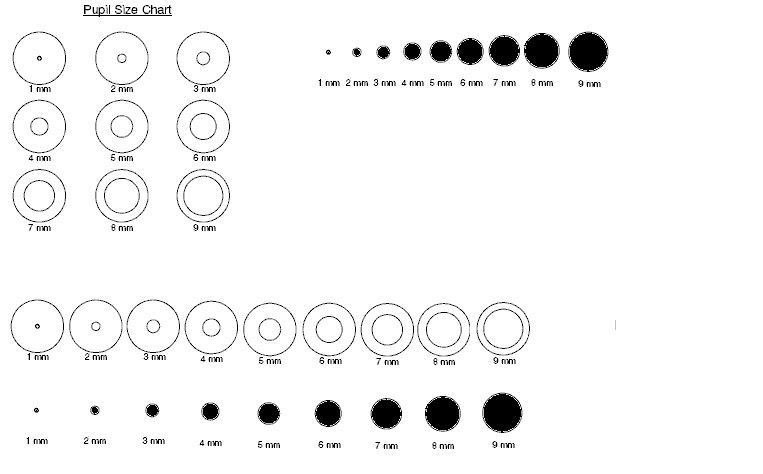In the field of ophthalmology, understanding the size of a person’s pupils is essential for diagnosing various eye conditions and assessing overall eye health. Pupil size can provide valuable information about the function of the autonomic nervous system and can also help in evaluating the effects of certain medications or treatments. In this article, we will explore some pupil size charts and discuss their significance in the medical setting.
- Pupil Size Chart - Image result for pupil size chart
 The first image displays a pupil size chart that provides a visual reference for different pupil sizes. This chart is often used to assess a person’s pupil dilation, which can be an important indicator for various eye disorders. Dilated pupils can occur naturally in response to low-light conditions, but they can also be a sign of certain eye conditions, such as glaucoma or uveitis.
The first image displays a pupil size chart that provides a visual reference for different pupil sizes. This chart is often used to assess a person’s pupil dilation, which can be an important indicator for various eye disorders. Dilated pupils can occur naturally in response to low-light conditions, but they can also be a sign of certain eye conditions, such as glaucoma or uveitis.
- Pupil Chart - Des’ projects or “Musings from the Shed”
 The second image showcases a pupil chart that aims to assist emergency medical professionals, such as ERT/EMS/EMTs, in assessing a person’s level of consciousness. Pupil size can play a crucial role in determining the severity of a head injury or the presence of neurological conditions. This chart allows medical professionals to quickly evaluate and record important information in emergency situations.
The second image showcases a pupil chart that aims to assist emergency medical professionals, such as ERT/EMS/EMTs, in assessing a person’s level of consciousness. Pupil size can play a crucial role in determining the severity of a head injury or the presence of neurological conditions. This chart allows medical professionals to quickly evaluate and record important information in emergency situations.
- Pupil Scale (mm) ~ Nursing
.jpg) The third image presents a pupil scale in millimeters (mm), developed specifically for nursing professionals. This chart assists nurses in accurately measuring and documenting the size of a patient’s pupils. By monitoring changes in pupil size, nurses can detect potential complications, such as increased intracranial pressure or adverse reactions to medication, and promptly inform other healthcare providers.
The third image presents a pupil scale in millimeters (mm), developed specifically for nursing professionals. This chart assists nurses in accurately measuring and documenting the size of a patient’s pupils. By monitoring changes in pupil size, nurses can detect potential complications, such as increased intracranial pressure or adverse reactions to medication, and promptly inform other healthcare providers.
- High Quality Pupil Gauge Chart Printable
 The fourth image presents a high-quality pupil gauge chart that can be easily printed and utilized by healthcare professionals. This chart serves as a handy tool for accurately measuring pupil size. It ensures precise documentation of pupil size variations and aids in the consistent monitoring of patients’ neurological status.
The fourth image presents a high-quality pupil gauge chart that can be easily printed and utilized by healthcare professionals. This chart serves as a handy tool for accurately measuring pupil size. It ensures precise documentation of pupil size variations and aids in the consistent monitoring of patients’ neurological status.
Conclusion
These pupil size charts and gauges are invaluable resources for healthcare professionals, allowing them to accurately assess and document changes in pupil size. By understanding the significance of different pupil sizes, medical providers can diagnose and manage eye conditions more effectively. It is crucial for healthcare professionals to be familiar with these charts to ensure optimal patient care and continual monitoring of pupil size as part of routine eye examinations or emergency situations.
Remember, if you have any concerns about your own pupil size or any aspect of your eye health, it is important to consult with a qualified healthcare professional specializing in ophthalmology. They can provide personalized guidance and recommendations based on your specific circumstances.